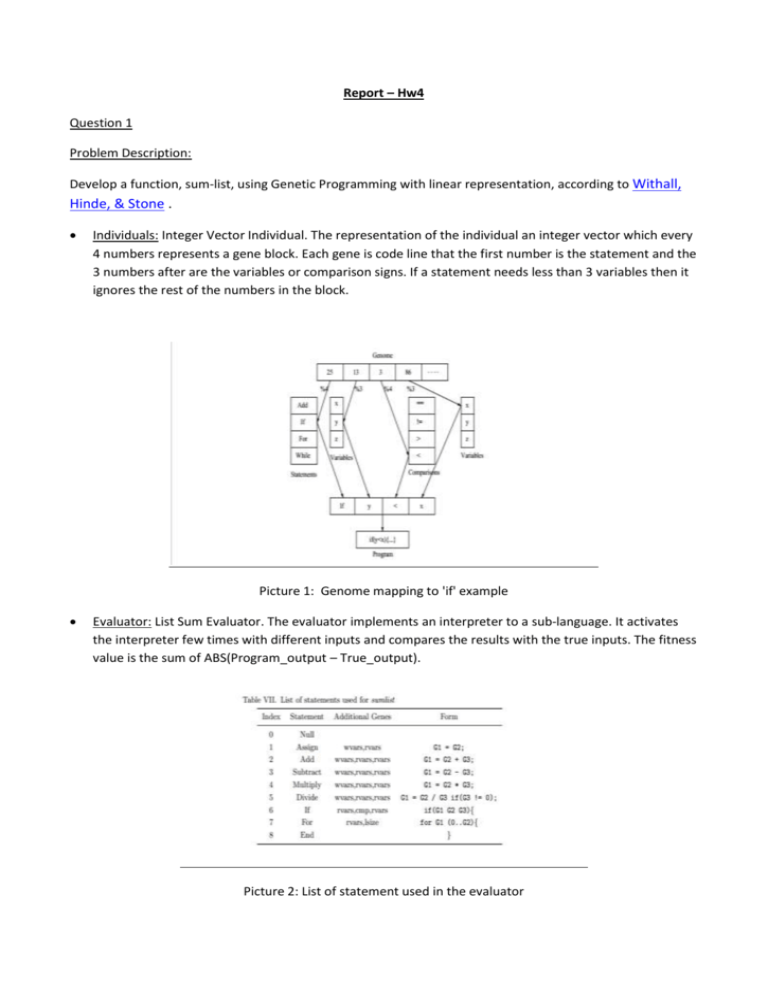Report - Question 1
advertisement

Report – Hw4 Question 1 Problem Description: Develop a function, sum-list, using Genetic Programming with linear representation, according to Withall, Hinde, & Stone . Individuals: Integer Vector Individual. The representation of the individual an integer vector which every 4 numbers represents a gene block. Each gene is code line that the first number is the statement and the 3 numbers after are the variables or comparison signs. If a statement needs less than 3 variables then it ignores the rest of the numbers in the block. Picture 1: Genome mapping to 'if' example Evaluator: List Sum Evaluator. The evaluator implements an interpreter to a sub-language. It activates the interpreter few times with different inputs and compares the results with the true inputs. The fitness value is the sum of ABS(Program_output – True_output). Picture 2: List of statement used in the evaluator Picture 3: Table of variables and comparison types used in the evaluator Selection: We used Tournament Selection: each time 5 individuals are randomly picked, and the one with best fitness is chosen. Population size: 100 Crossover: Uniform Crossover. Mutation: Integer Vector Simple Mutator. Each number in the vector has a Pm probability to change into a different number between [0..256] Generations: 500 Experiment A: Sum List We tried to develop a program that will calculate the sum of a list. In each individual we added a header that will initialize the variables and a footer that will return us the sum value. Then we ran the Algorithm 50 times and these are the results: Individual program (run no.0): 1. Assign(109) sum (45) tmp (190) 2. Add(65) sum (132) list[temp%size] sum (0) 3. Assign(55) sum (209) tmp (34) 4. For(70) tmp (138) lsize (1) 5. Add(65) sum (224) sum (140) list[temp%size] 6. If(69) size (189) >= (53) sum (72) 7. Null(99) 8. Null(0) We can notice that lines 1-4, 6 are redundant as might occur in a self evolving program. Summary of 50 runs: o Generations needed to find optimal (100 evaluations in each generation): Max: 500 Min: 3 Avg: 127 o Success rate: 100%, each run created an individual with fitness 0. Conclusions and observations: 1. The algorithm converges very quickly to the right program. 2. If we take a look at an individual from the middle of the run we can see that it doesn’t help to have good fitness, we must have the best fitness in order to have the program we are looking for.











